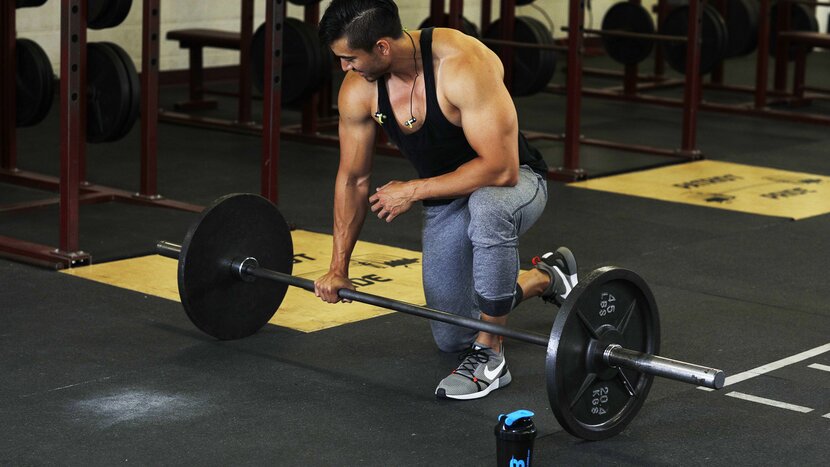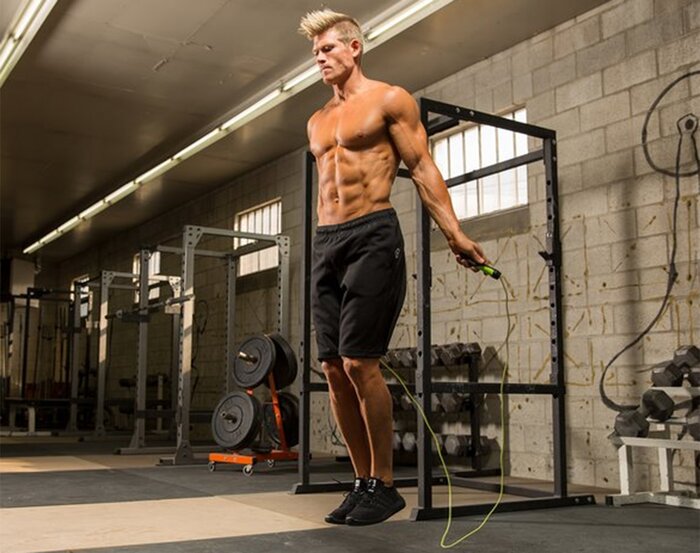
Image Courtesy: BodyBuilding.com

Image Courtesy: BodyBuilding.com
As a personal trainer, I’m often asked by clients, “How much time should I rest between sets?”
My answer always depends on the client’s goal. I’ve had clients training for absolute strength, aesthetics, weight loss, or improving muscular endurance. Their workouts (or at least part of them) all required different rest intervals.
In its book, “Essentials of Strength Training & Conditioning,” the National Strength & Conditioning Association recommends the following:
These rest periods are based on how the body produces the energy to perform work during training. Specifically, the body uses three different energy systems; however, the amount of each energy system’s contribution depends on the intensity and the duration of the event.
The Phosphagen System
For strength activities such as a one-rep max (1RM) deadlift or bench press, the phosphagen system contributes most of the energy. It provides ATP (adenosine triphosphate), which is what your body uses to power muscular activity for short-duration activities lasting up to 30 seconds.
The phosphagen system uses creatine phosphate to generate ATP, which is depleted during high-intensity exercise like weightlifting and sprinting. Complete ATP resynthesis occurs within 3-5 minutes—hence the suggestion that strength and power athletes rest that long between sets.
If you work more than 30 seconds, up to 2 minutes, you’re using the glycolytic energy system. It involves the breakdown of glycogen, which is stored glucose or glucose in the blood, to resynthesize ATP.
If you’re exercising very hard—say, at 100 percent of your maximal oxygen uptake, or VO2 max—you can burn through the entire glycogen stores of some muscles. To refill those stores, consume plenty of carbohydrates every two hours after a hard workout. You can achieve a full refill within 24 hours.

Bodybuilders typically train in a rep range and with an intensity that enlists the phosphagen and glycolytic systems. Performing 8-12 reps at 60-85 percent of 1RM, bodybuilders look to deplete their glycogen, stimulate growth, and refeed their muscles immediately.
That is also the reason people take branched-chain amino acids during their workout—in case all glycogen has been depleted from several sessions of hard training and the body starts to use amino acids for energy.
At 2-3 minutes of work, you’ll still be using the glycolytic system but will start to call on more of the oxidative, or aerobic, system. The oxidative system uses carbohydrates, fats, and, as a last resort, protein for energy.
Muscular endurance training can involve sets that last 2-3 minutes; for example, a set of 30 bodyweight squats or lunges may take 2 minutes to complete. Three sets of an exercise done for 20-30 reps will tap both the glycolysis and oxidative systems. During muscular endurance training, you’ll rest 30 seconds or less between sets.
Activities longer than 3 minutes, like going for a 1-mile run, primarily use the oxidative system. When performing such low-intensity training, you’ll need to make sure that your electrolytes, hydration, and food intake are on point because it’s a race against time before you get completely fatigued. During long, steady-state cardio workouts at low intensity, rest periods are typically taken as needed.
Interval training involves exercise intensity close to VO2 max. It’s typically used for aerobic endurance training with activities like running, biking, stair climbing, and swimming. Use work periods of 3-5 minutes and after that, rest.
The work-to-rest ratio during interval training should be 1:1, meaning you rest just as much as you work. Interval training should increase VO2 max and improve power production.

High-intensity interval training (HIIT) involves repeated hard bouts of work interspersed with short rest periods. Again, you will be exercising near your maximum heart rate, or VO2 max. You may even exceed those limits for a few seconds.
HIIT training can be short (under 45 seconds of work) or long (2-4 minutes). I like to use shorter workouts with a 1:1 or 1:2 work-to-rest ratio for starters. I typically add 30-60 seconds on top of the inter-set rest interval for the between-rounds rest period.
In this example, the phosphagen system won’t be able to handle the load, and the glycolytic and aerobic energy systems will come into play. Even so, 1 minute and 40 seconds is enough time for the body to replenish some ATP, so the phosphagen system will start to be used at the top of each round. Eventually, though, the body will need to break down glucose for energy.

Recent research on the effect of rest interval length on strength and muscle recovery suggests, generally, that more rest is better.
A 2017 study examined muscle fatigue after three different CrossFit workouts: “Cindy” (as many rounds as possible of 5 push-ups, 10 pull-ups, and 15 squats in 20 minutes); a HIIT jumping rope “double under” workout that called for 8 rounds of 20 seconds of work and 10 seconds of rest; and a weightlifting workout consisting of as many reps as possible of a barbell power clean done at 40 percent of 1RM in 5 minutes. The only workout with rest intervals was the jumping rope workout.
Before, during, and 3 minutes after each workout, the subjects were tested on their jumping height. The result was that the double-under subjects could regain their jump ability 3 minutes post-workout, unlike the other no-rest groups. The recovered jump ability was likely explained by recovered creatine phosphate levels. The short duration of the workout and short rest periods allowed the body to recreate more energy.
Resting for 2 minutes is more beneficial for maintaining power output across sets compared to a 1-minute rest, according to a 2015 study. In this case, participants did 6 sets of 6 reps of Smith machine squats at 60 percent of 1RM, resting either 1, 2, or 3 minutes between sets. Although power output decreased as the lifters went on through the workout, there was a lesser decrease of average power when they rested for 2 minutes compared to a 1-minute rest period (2.6 percent versus 10.5 percent).
There are numerous other studies on rest intervals during weightlifting, and the general trend is that more rest equals better results.
Authored By:
Mark Barroso is an NSCA-CPT, Spartan SGX Coach/Obstacle Specialist, and freelance fitness writer based in New Jersey.
Originally posted on Bodybuilding.com